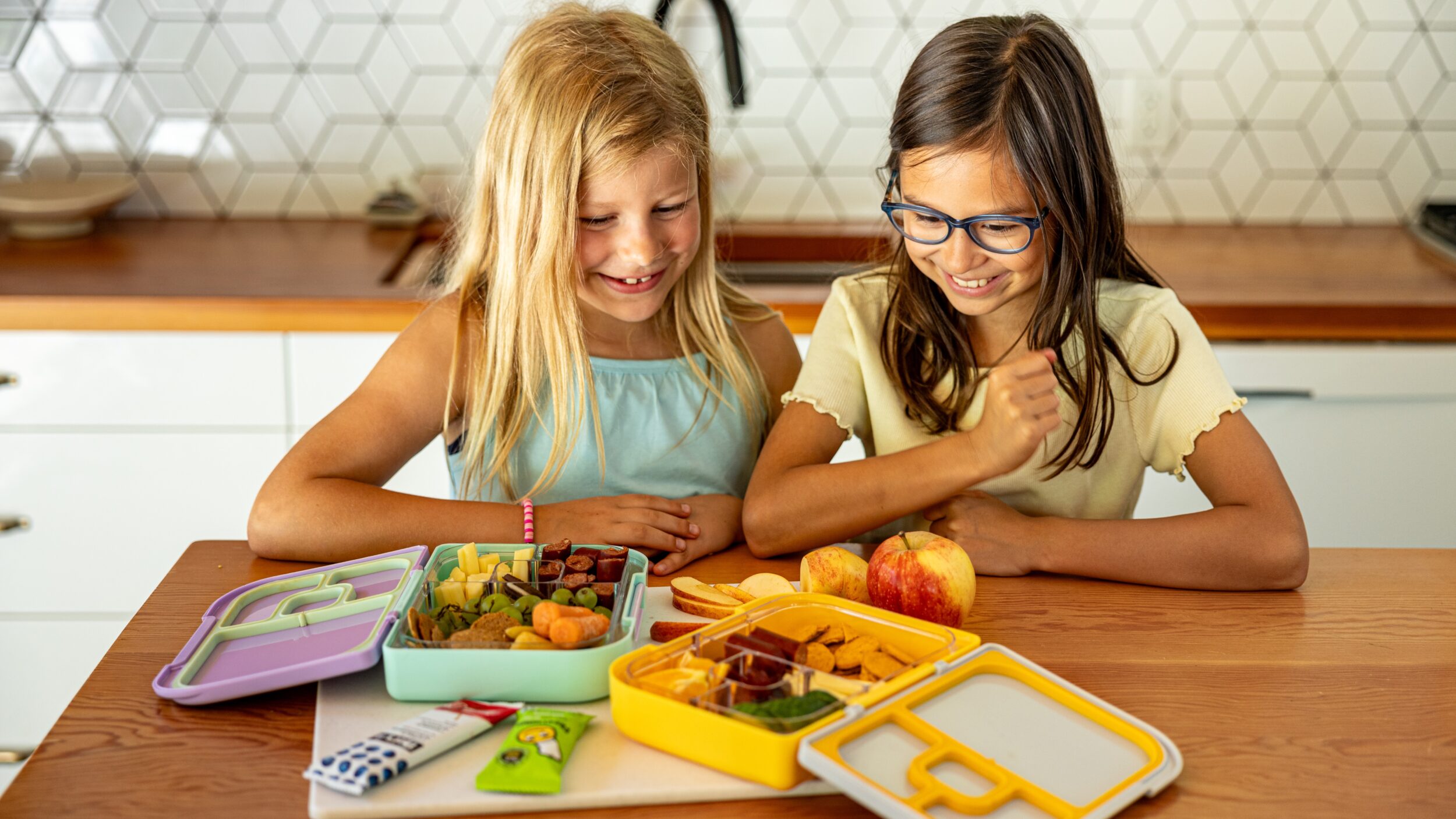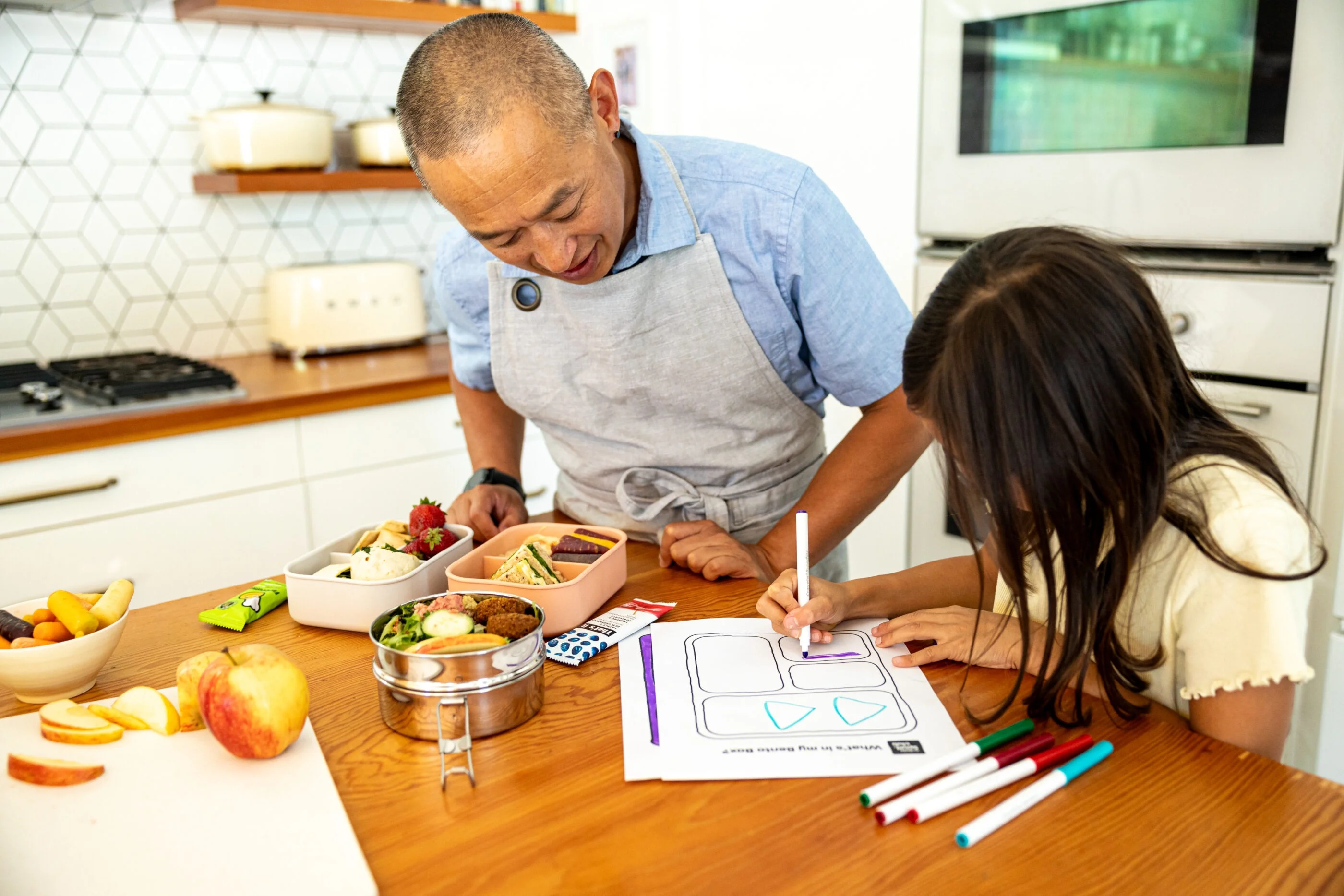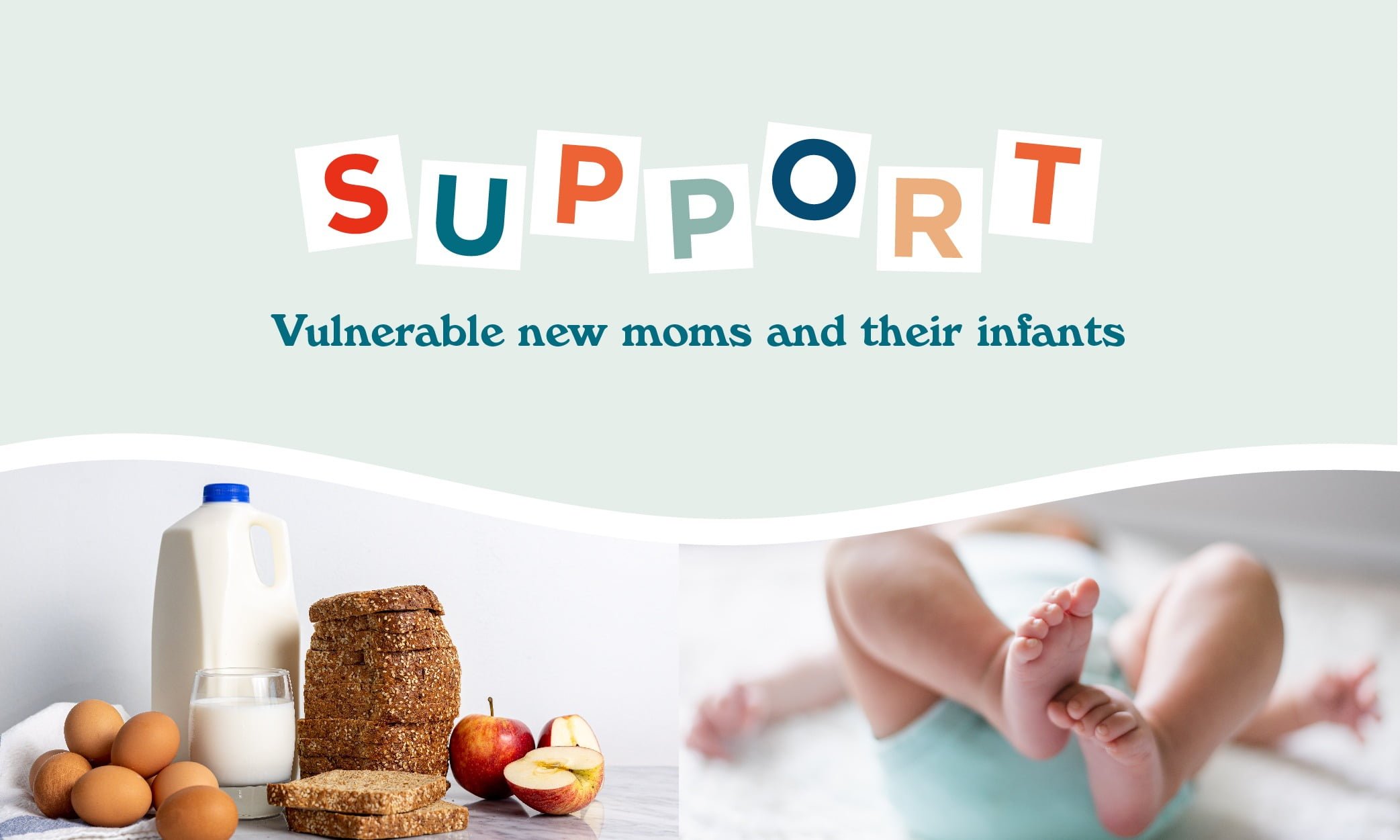This peppermint white chocolate creamer is the perfect way to enjoy your favourite holiday coffee…
Lunch box basics:
You will need a few key basic things in place before packing your kid’s lunch.
First things first, you truly need a good lunch box. I recommend investing in:
- a washable insulated lunch box that will keep cold foods cold.
- leakproof containers for storing foods (that your kiddo is able to open on their own).
- a thermos and ice packs (to keep food extra hot or cold).
- reusable cutlery.
Second, if you can get your child involved in making and/or packing their lunch box, they are much more likely to actually eat it! Now that we’ve got the essentials in tow, let’s dive into how to build a nourishing lunch box.
How to build a satisfying lunch box:
When putting together your child’s lunch, variety is key. Use the below guidelines to create a satisfying lunch every time!
- 2+ protein foods: rotisserie chicken, hard-boiled eggs, school-safe nut/seed butter, beans/lentils, leftover meat from dinner (roast beef, meat sauce, taco meat), cheese, cottage cheese, Greek yogurt, hummus, tuna or salmon salad, nitrite-free deli meats.
- 1+ starch or grain-based foods: pita bread, wraps, crackers, bread, bagels, pancakes, waffles, muffins, cooked grains (rice, quinoa, barley, etc.), pasta, corn, potatoes, sweet potatoes, cold or hot cereals.
- 1+ fruit: fresh fruit (bananas, apples, pears, oranges, berries, cherries, kiwi, melons, pitted fruits etc.), fruit canned in water or its own juice, frozen fruits, and dried fruit.
- 1+ veggie: fresh vegetables (carrots, cucumber, snap peas, broccoli, cauliflower, bell pepper, celery, cherry tomatoes etc.), cooked veggies (roasted, sauteed, or steamed), frozen veggies, salad mixes.
- 1-2 “just because” foods: these are foods that don’t fall into any of the above categories, but are still important to include in your child’s lunch. Allowing for “just because” foods shows our kids that we also eat for pleasure, and to experience joy and satisfaction. Some examples include cookies, cupcakes, pastries, chocolate bars, chips, gummies, chips, fruit leathers, dunkaroos, etc.
- BONUS: leftovers! Don’t be shy to include leftovers from dinner. This helps to reduce food waste.
What are the best snacks to add to my kid’s school lunch?
In addition to lunch, your kids will need something satisfying to fill the nutrient gap between meals and at recess so they have enough fuel to play, learn and grow. This is a great place to get your kids involved in the process! Offer them the choice between a few different snack options to add to their lunch kit.
Aim to add snacks that contain both protein and fibre, which provides more “staying power”, keeping your kiddo satisfied for longer between meals. For example, if your child wants some popcorn (high in fibre) in their lunch, mix in some of their favourite seeds to add some protein.
A dietitian’s top 10 favourite snack options from Spud:
I am a big fan of Spud’s passion and commitment to sustainability from using environmentally friendly delivery to supporting local vendors whenever possible. This helps to keep environmental impact low and close to home. Here are some of my favourite satisfying snack ideas (all available from Spud) that your kids will love:
- That’s It Fruit Bar + Organic Meadow Cheese Stick
- Natures Bakery Fig Bar + Individual Liberte Greek yogurt cup
- Cedar Valley Selections Pita Chips + Habibi’s Tzatziki dip
- Mid-day Squares
- Hornby Organic Bars
- NoochPop Popcorn + Organic Sprouted Pumpkin Seeds
- Three Farmers Roasted Chickpeas + sliced apple
- Three Farmers Roasted Lentils + Everland Pitted Dates
- Freeyum Crackers + Hummus
- Ezekiel Sprouted Grain Tortilla + Wow Butter + Banana “roll ups”
Should I be adding “treats” to my kids’ lunch?
First, as a dietitian, I don’t love using the word “treats” because it puts these foods on a pedestal and makes them more enticing for kids. Instead, I follow a food-neutral approach and just call all foods by their names! For the purposes of this post though, you’ll notice that I use the word treat now and then, as well as “just because food” (which I like better). And yes! Including a treat or “just because” food in your kids’ lunch is especially important if your child seems to be “treat-obsessed”. Fixation on treat foods is a good indication that your child actually needs more opportunities to enjoy them. As they start to feel less limited or restricted around these foods, you will notice that they will also start to act calmer and more regulated in their presence! Repeated exposure helps to diminish the intense allure treats can have (especially when they have been off limits!). Adding these foods to your child’s lunchbox will help to put them on a level playing field with other more nutritious foods. And they’re fun to eat and enjoy and add value in different ways. Read more about food neutrality here.
Keep it neutral with the snacks and treat foods that you add to your kid’s lunch box
Taking the moral value out of food helps to prevent your child from feeling guilt or shame for eating certain foods. This food neutrality philosophy helps create a safe neutral space for all different kinds of foods to fit in your child’s life. While all foods are not equal in the nutritional value they provide, we need to stop assigning moral value to foods, which ends up disrupting the chance for our children to develop a healthy relationship with all food.
A good place to start is to reject dichotomizing food labels such as “healthy” or “unhealthy”, “treats” or “sometimes foods”, and just call food by its name. Simply “an apple”, or “a cupcake”.
One way to keep things neutral in your kiddos’ lunch kit is to include fun snack foods and “just because” foods alongside the other foods you have packed. Take the colour, flashy packaged snack foods out of their package to help take them off their pedestal. This helps put them on the same playing field as everything else in the lunch kit!
Meet Sarah
 Sarah Remmer, is a registered dietitian (since 2006) mom of 3 and the proud founder and President of The Centre for Family Nutrition, a Calgary-based nutrition counselling practice that specializes in prenatal, infant and child nutrition, that specializes in prenatal, infant and child nutrition.
Sarah Remmer, is a registered dietitian (since 2006) mom of 3 and the proud founder and President of The Centre for Family Nutrition, a Calgary-based nutrition counselling practice that specializes in prenatal, infant and child nutrition, that specializes in prenatal, infant and child nutrition.




